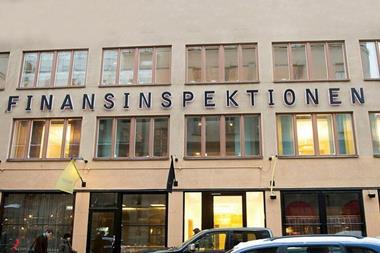Real estate continues to gain recognition as a preferred alternative asset class for institutional and retail investors alike in an era of stagnant equity growth, low interest rates - which make for cheap capital and also offer uncompelling returns for safe government-backed instruments - and an economic recovery which has been less than robust. This is especially true for stabilised or fully leased core assets, which offer not only predictable returns but also hold out some potential for increased value. In the US, no city embodies this changing attitude more than New York.
With few exceptions, such as Washington DC, and Southern California, real estate fundamentals in major cities across the US remain far less compelling than they are in midtown Manhattan, at roughly 240mft2 the nation’s largest office market. The vacancy rate at the end of the third quarter of 2004 stood at 10.5%, down from 13% a year earlier; net effective rents had risen from $11.50 (e8.6) to $15.40/ft2. Of particular interest, large contiguous blocks of available space were at a rising premium: there were just six remaining.
In the past two years, New York has seen a swelling reservoir of buyers seeking high-quality buildings that are near full occupancy. Such buildings offer a comfort level to investors that they can’t find in stocks and government securities. The competition for these assets has been strong enough to force cap rates near or below 6% - more in line with historic investment levels in Europe. Building prices now sometimes reach close to or even exceed replacement cost, a benchmark not seen in New York in decades.
The factors that make New York properties so costly are also what make them so attractive. With its extremely high barriers to development - there is a true paucity of sites, land costs are high and the approvals or entitlement process is lengthy, costly and uncertain - identifying acquisition opportunities requires commitment and persistence. Understanding the risks of this market also requires deep familiarity with the market’s history and psychology. New investors who entered the market toward the end of the previous cycle typically based their rental projections on current leases. They have faced sharp falloffs in real revenue, while those who based projections on historical information have had an easier time.
Although most buyers in the current cycle have focused on stabilised buildings, we believe that conditions are better for investment in buildings that face some lease-up risk. Buying stabilised buildings may appear attractive, but that will change as interest rates rise and other investment instruments begin to make these properties less attractive.
Today’s rents are as much as 30% below their historic highs of just a few years ago. The discounting occurred as a result of the rapid retreat from the inflationary growth of the late-1990s. Rental pricing today is marked by the measured gains of stable businesses seeking to expand from a secure foundation. We believe that the rate of rent increases in such a market will be sustainable throughout midtown Manhattan.
Downtown Manhattan - on its own, the country’s third largest office market - offers a somewhat murkier picture. While a great deal of obsolete office space has been or is being converted to residential use, there is ongoing speculative construction of millions of square feet at Ground Zero. Nonetheless, the area still represents excellent opportunity, given an appropriate discount in pricing and the prospect of a quick exit. Other areas of New York City, such as Queens, show signs of a quickening business environment.
New York remains the strongest, most stable market in the US. The tenant base is rich in financial institutions and the service industry, as well as in media and government. Business conditions, including security, have continued to thrive under supportive city and state governments. Numerous infrastructure improvement initiatives are also being moved steadily forward. International and domestic investment capital continues to flow into the city, mindful of these factors and of the challenges of other markets. For European investors equipped with a strong euro, there is also a compelling advantage to courting New York’s most expensive properties: a rare 30% discount.
One deal illustrates the continuing complexity, competitiveness and desirability of the New York commercial property marketplace.
In early November 2004, Tishman Speyer reached an agreement with The New York Times Company to acquire its historic 15-story, 750,000ft2 property on West 43rd Street, for $175m. With the newspaper publisher expected to move into new headquarters under construction in 2007, we negotiated a sale-leaseback arrangement allowing the paper and other Times businesses to remain in place until moving date, when a TSP-controlled fund and its co-investment partners, the New York City Employees’ Retirement System and the Teachers’ Retirement System, will begin to renovate the property.
The pre-emptive deal averted a protracted bidding war and gave the Times Company certainty of a sale at a high point in the market. As for Tishman Speyer, we were able to acquire a highly desirable property ahead of an extremely competitive field of likely bidders including real estate investment trusts as well as domestic and international private-equity and institutional investors. It has also afforded Tishman Speyer an excellent time frame in which to evaluate and plan how best to reposition this property for its next generation of end users, all while retaining cash flow from a highly reliable tenant.
Steven R Wechsler is senior managing director at Tishman Speyer Properties












No comments yet